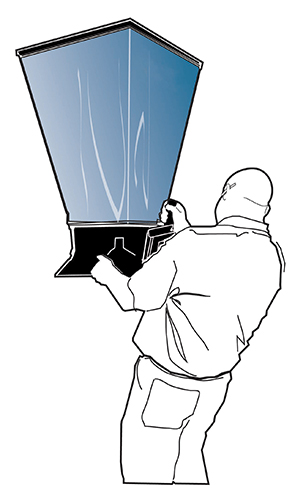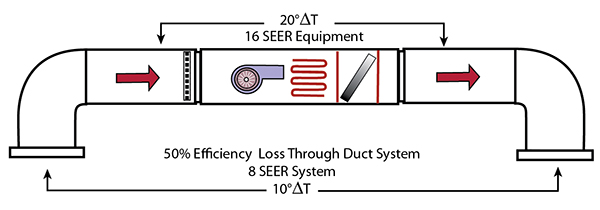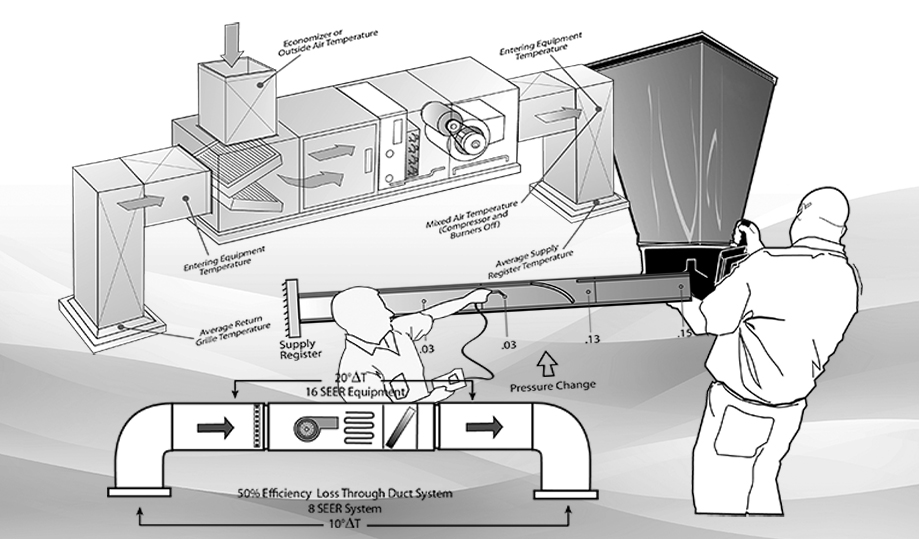Once you see a large pressure change, identify what’s inside the duct and causing the problem, then repair it. This may be the only correction you need to make to fix a comfort problem.
However, sometimes you won’t find any duct pressure problems, but there’s still an unresolved comfort issue in a room. This brings us to our next air diagnostic test.

Room Static Pressure
It’s possible you’ll need to look closer at the room you’re having issues with. One of the simplest tests is a room static pressure test. Just like you use a static pressure test for an HVAC system, you can also use one for a room.
You might wonder why? Well, the room is part of the HVAC system. It’s what connects airflow from the supply registers back to the return grilles. And unless you account for this connection, you could overlook a common source of comfort problems.
To perform this test, you’ll need a high-precision manometer (micromanometer) like a DG-8 from The Energy Conservatory (TEC). While a standard manometer is fine for measuring HVAC system pressures, it doesn’t have a low enough range to measure room pressure.
During this test, look for how the room influences the HVAC system while it’s running. A properly balanced system will have equal airflow and pressures into and out of a room. The room pressure test helps you see if these airflow and pressure relationships are off.
Start by turning on the HVAC system to the mode of operation you’re having problems with. Close the problematic room’s door and attach a hose to the micromanometer. Attach a thin probe to the other end of the tubing (so it won’t kink) and slide it underneath the door.

If you see a pressure change more than ±3 pascals (Pa) there is an airflow imbalance, or the interior door is acting like a damper — cutting off return airflow to a central return grille.
Inspect the duct system and its layout to see if the problem room has a supply register and return grille. If it has both, you’re dealing with an airflow imbalance. If the room only has a supply and no return, you’re likely dealing with a situation where the door becomes a damper.
Comfort problems associated with this installation can be tricky because they are often situational and only appear when the door is closed. The system often works fine when the door is open.
Unfortunately, most door undercuts won’t provide enough free area for adequate airflow circulation back to a central return.
So, if you’re dealing with a system using a central return, you will probably need a jumper duct to relieve room pressure. To estimate the duct size needed, you can crack the room door open until you see less than three pascals (3 Pa) on the micromanometer display.
TEC’s Roomulator™ can help you identify options to relieve the pressure in the room.
The addition of a jumper duct may be all you need to solve this problem on a central return system. But what if the problem room has both a supply and return in it and the room pressure test is inconclusive? This situation leads us to the third air diagnostic test.
Click Below for the Next Page:













Recent Comments